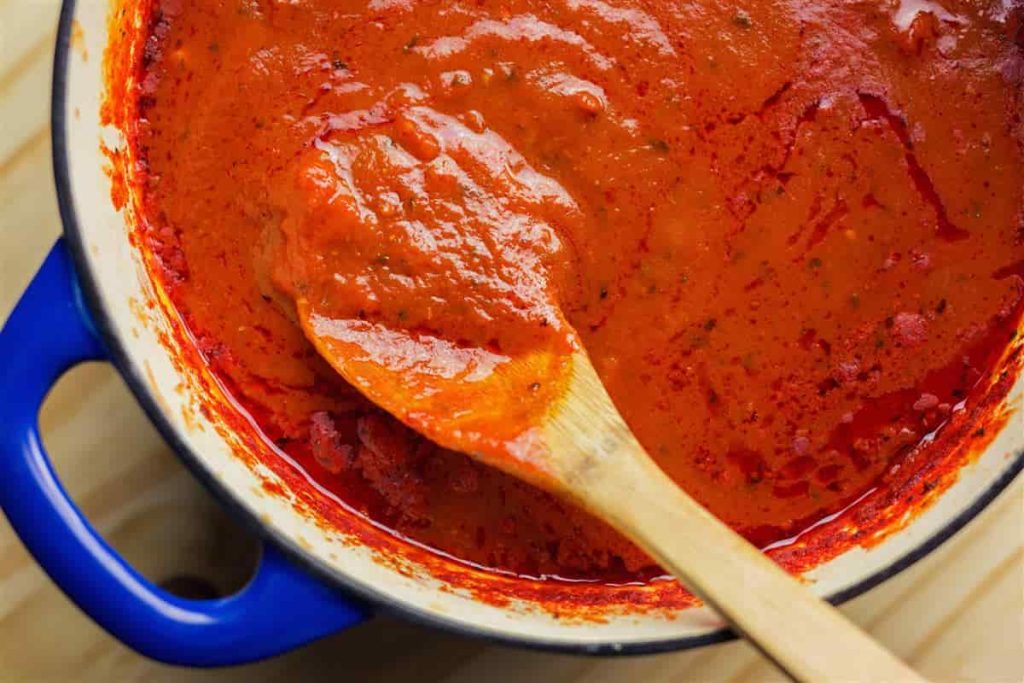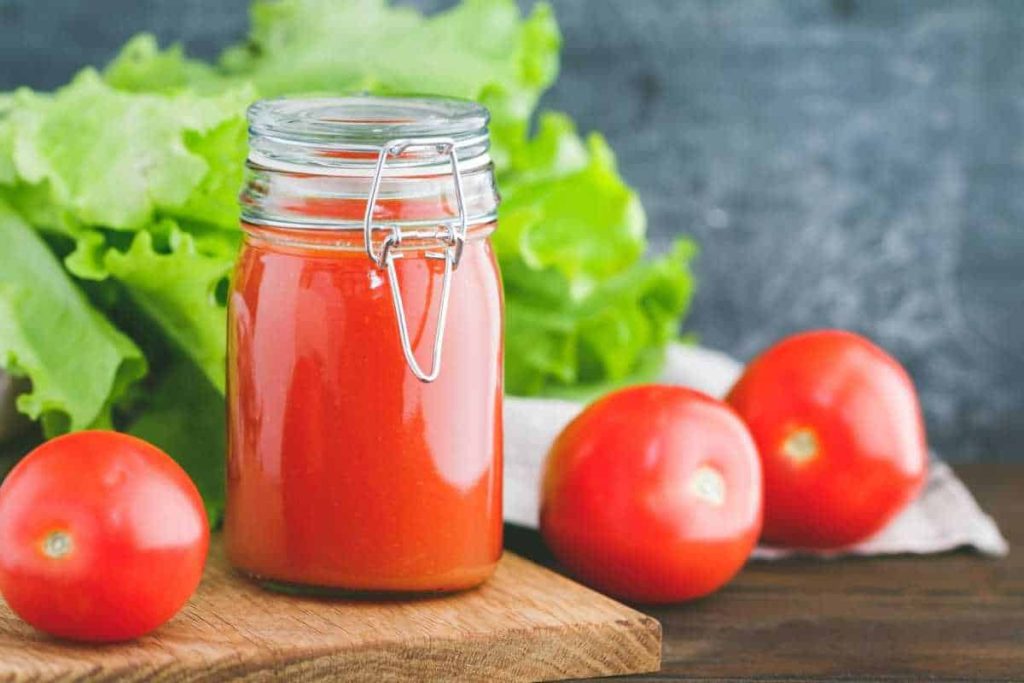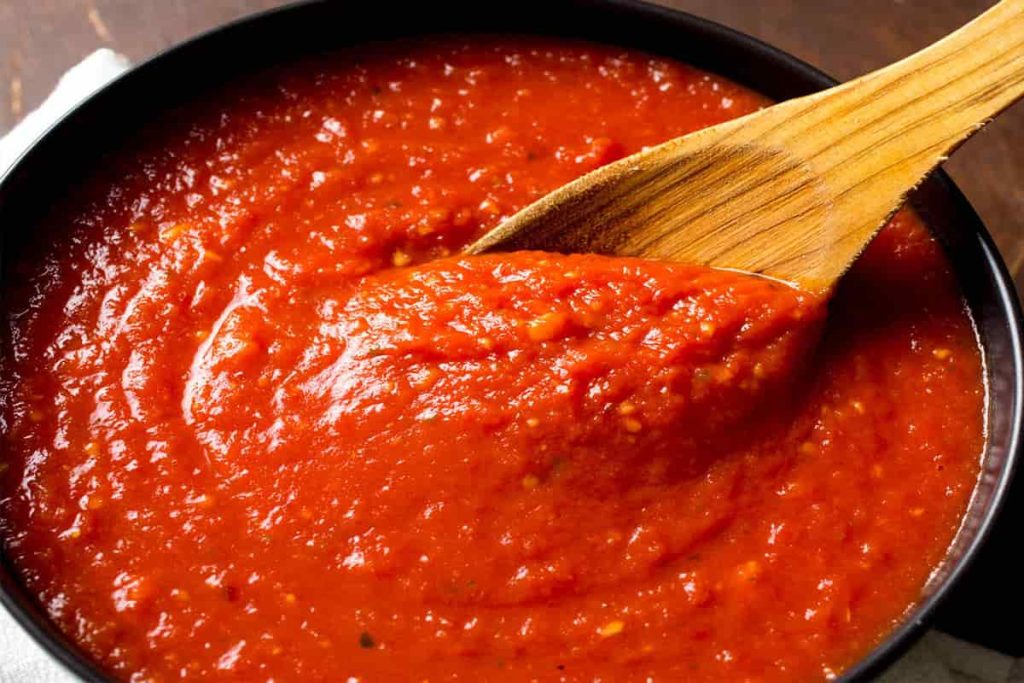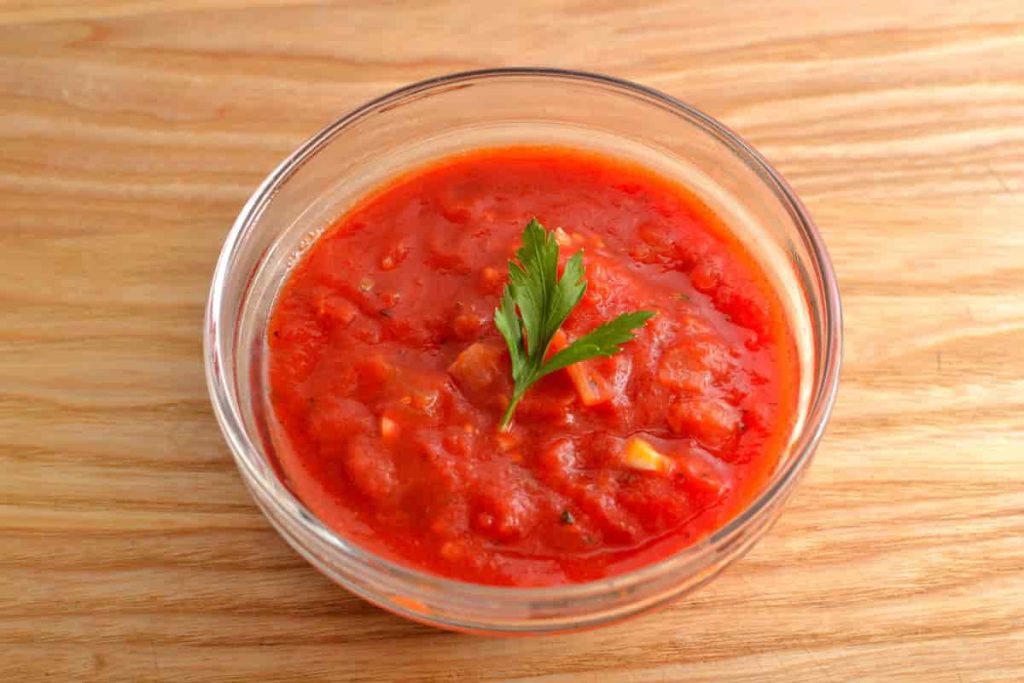To save money, you can use the frying method for preserving and saving some products such as tomato paste. This is important to how old they are but using this approach for 8 or 9-month tomato products is also possible.
If you want to use tomato paste for a longer period of time and truly enhance its shelf life, I propose that you use the frying method.
This will allow you to utilize tomato paste for a longer period of time. You may improve the flavor of tomato paste and extend its shelf life by following these instructions.
When the lid of the tomato paste is removed and the product is taken out of its previously sealed form, the likelihood of the tomato pastes going bad increases.
Therefore, the best course of action is to look for an appropriate solution to keep it up. The first thought that comes to mind is to store the jar of tomato paste in the refrigerator.
However, if you have a large quantity of tomato paste, particularly if a considerable amount of time has passed since it was produced, for example, tomato paste has a shelf life of approximately 8 or 9 months, and even longer in cooler temperatures.

Since it is easily spoiled, the best approach to keep it fresh is to fry it and then store it in the freezer afterward.
The process of frying tomato paste involves procedures that not only make the tomato paste or even the tomato taste better but also allow you to store the tomato paste in the freezer for a longer period of time.
This method is incredibly cost-effective and reasonable, particularly for those individuals who make tomato paste in their own homes.
Fry the tomato paste in a variety of ways or caramelize it in a variety of ways. However, there is no need for concern because each of these procedures is simple, and there is no requirement to make use of difficult and pricey equipment.
You should also be aware that fried tomato paste or tomato paste that has been caramelized can be used in a wide variety of meals.
You should pretty much never do this: pour a dollop of store-bought tomato paste directly into a bubbling broth (or sauce—or anyplace else, for that matter).
Here’s why: it will make the tomato paste taste bitter. The reason for this is that tomato paste straight from the tube (or can) has a sour, mineral taste that will not benefit the food you are preparing in any way.
Instead, the trick to successfully using tomato paste is to caramelize the tomato paste first, and I mean truly caramelize it, before adding any liquid to the pot. When you create tomato sauce, this does not mean that you need to use a second pot or pan to simmer the tomatoes.

The procedure is as follows: in a sauté pan, soften some onions, carrots, garlic, or any other aromatics of your choice until they are almost as dark as you would like them to be (they will continue cooking with the paste). Sauté whatever spices you choose for a few minutes to help release the essential oils in them.
After adding the tomato paste, continue to boil the mixture until the paste darkens from a bright crimson to a brick red. Use vinegar or whatever other liquid you’re working with to caramelize the pan.
According to some experiences, “when you caramelize tomato paste, you are focusing the natural sugars that are already present in the paste.”
The browning reaction will also amplify other complex flavors that are already present in the paste. Tomato paste is full of glutamates, which naturally improve the savory or quality of a dish, and browning will release these glutamates.
Some cooks issue a word of caution, stating that in their experience, they have found that many individuals incorrectly believe they are caramelizing their tomato paste when in fact they are merely heating it through.
Tomato paste is often a vivid, flaming red color when it is first removed from its container, whether it be a tube or a can. Cooking it until it is “noticeably less vivid” is what Anna recommends doing to it.

Cooking a small amount of tomato paste until it reaches that dark color is a smart trick that can be used to make any savory food (not only pasta sauce!) more intriguing, and it can also make the dish more filling.
Use it in chili, in any stew or soup that contains a tomato ingredient, or even merely to give a rich flavor to an average store-bought stock. You can use it in any of these applications.
In point of fact, you can also use this technique in a wide variety of meals in which tomato isn’t the primary focus: I recently caramelized tomato paste when creating an otherwise tomato-free chicken stew, just to give the dish a little bit of underlying sweetness and savory flavor.
The stew did not end up tasting overly tomatoey as a result, but rather deliciously savory. And eerie in its sweetness. And it lived up to my expectations in terms of scrumptiousness.
Caramelization is the key to producing a flavorful tomato paste, which is the secret ingredient.
It is not enough to simply mix some tomato paste into a sauce or some veggies and anticipate that it will have a wonderful flavor. It won’t happen. Anywhere though the tomatoes have been cooked, you will still get a flavor that is similar to raw tomatoes; this is in no way even near to the umami explosion that we are searching for.
The trick is to sauté it in some olive oil or some kind of fat until it gets a brick-red color and starts to caramelize, which typically takes about five minutes or so over a medium heat setting. As soon as it becomes brown and begins to adhere to the pan, all you have to do is deglaze the pan with some water or another liquid, scrape out any portions that have adhered, and get on with your day.











Your comment submitted.